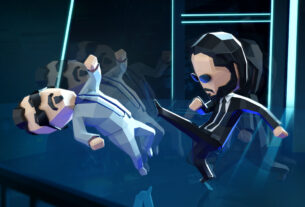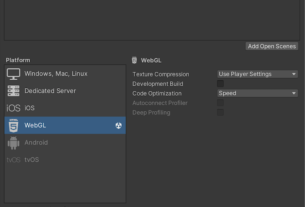How to Make a 2D Game in Unity: A Comprehensive Guide

Introduction to 2D games and Unity
The popularity of 2D games has been on the rise due to their simplicity and nostalgic appeal. Unity, a powerful game development platform, offers robust tools and features for creating stunning 2D games. In this article, we’ll explore how to make a 2D game in Unity from scratch.

Setting up Unity for 2D game development
Before diving into game development, you need to set up Unity on your computer. Begin by downloading and installing Unity from the official website. Once installed, familiarize yourself with the Unity interface, including the Scene view, Game view, and Inspector panel.

Creating a new 2D project in Unity
To start a new 2D project, open Unity and click on “New” to create a new project. Choose a name and location for your project, and make sure to select “2D” as the template. Unity will then create a new project with the necessary settings for 2D game development.

Importing assets for the game
Assets such as sprites and audio files are essential for building a 2D game. You can either create your own assets or use pre-made ones from online repositories. Import these assets into Unity by simply dragging and dropping them into the project folder.

Understanding GameObjects and components in Unity
In Unity, GameObjects are the basic units of a scene, and they can be anything from characters to obstacles. Each GameObject can have multiple components attached to it, which define its behavior and properties. Understanding how to manipulate GameObjects and components is crucial for game development.

Designing the game environment
The game environment includes elements like background, foreground, and camera settings. Design a visually appealing environment by adding background images, foreground objects, and adjusting the camera’s position and size to fit the gameplay.

Implementing player controls
Player controls are essential for interactivity in the game. Create scripts to handle player movement using Unity’s built-in scripting language, C#. Add animations to the player character to make movements more dynamic and engaging.

Creating game mechanics
Game mechanics define how the game operates and what the player can do. Implement various game mechanics such as obstacles, enemies, power-ups, and a scoring system to make the gameplay challenging and rewarding.

Testing and debugging the game
Once the game is playable, it’s essential to test it thoroughly to identify and fix any bugs or issues. Playtest the game on different devices and platforms to ensure compatibility and smooth performance. Use Unity’s debugging tools to track down and resolve any errors.

Polishing the game
Polish the game by adding visual effects, sound effects, and fine-tuning gameplay elements. Enhance the overall experience by refining animations, adjusting difficulty levels, and optimizing performance for better player immersion.
Publishing the game
Finally, it’s time to share your game with the world by publishing it on various platforms. Build the game for different platforms such as PC, mobile, and consoles, and then upload it to game stores like Steam, Google Play, or the App Store.

Conclusion
Making a 2D game in Unity is a rewarding experience that allows you to unleash your creativity and bring your ideas to life. By following the steps outlined in this article, you can create a captivating 2D game that entertains and delights players around the world.

FAQs
- Can I make a 2D game in Unity if I have no prior coding experience?
- Yes, Unity offers visual scripting tools like Bolt or PlayMaker that allow you to create games without writing code.
- Do I need to purchase assets for my Unity game?
- While you can use free assets available online, purchasing high-quality assets can greatly enhance the visual appeal of your game.
- Can I monetize my 2D game made with Unity?
- Yes, Unity provides various monetization options such as ads, in-app purchases, and selling the game itself.
- How long does it take to make a 2D game in Unity?
- The time it takes to develop a 2D game depends on factors like complexity, team size, and experience level, but a simple game can be completed in a few weeks.
- Is Unity the best platform for making 2D games?
- Unity is one of the most popular game development platforms and offers robust tools and features for creating both 2D and 3D games, making it an excellent choice for game development.



